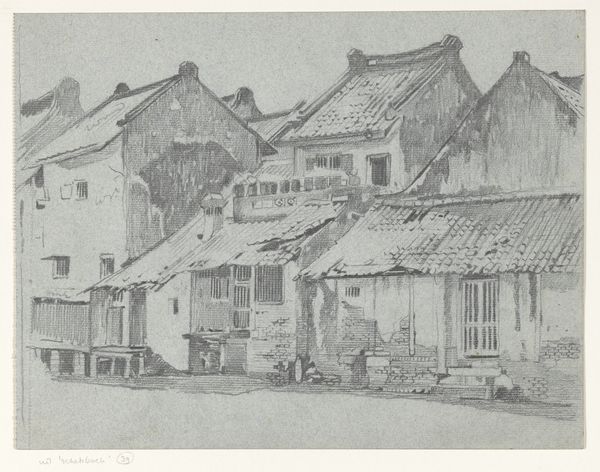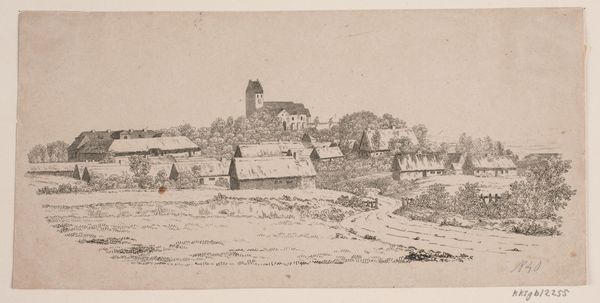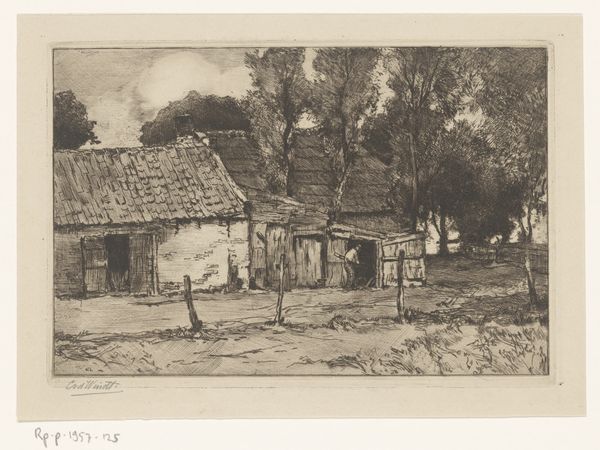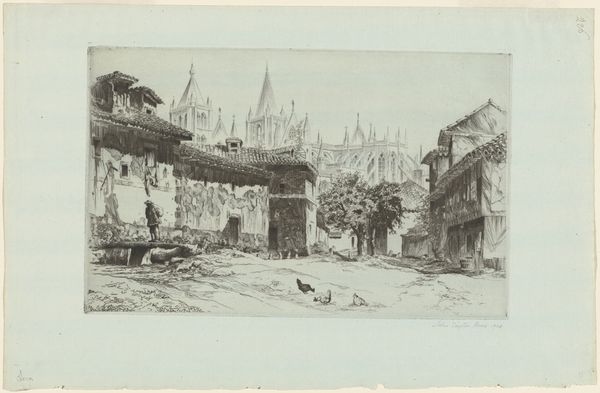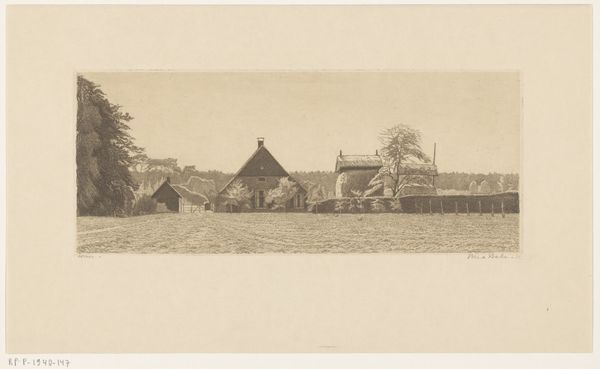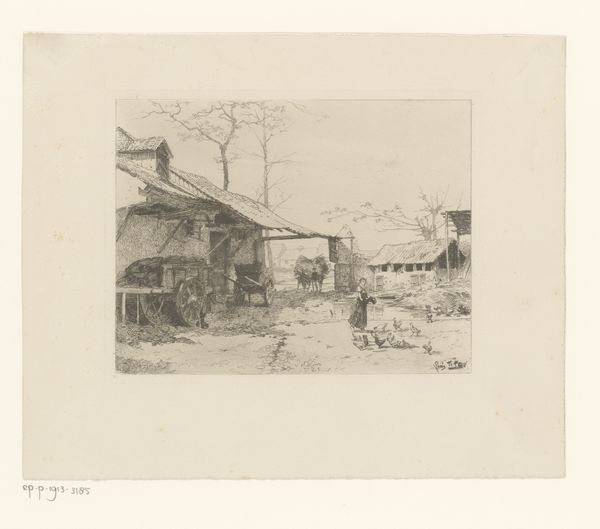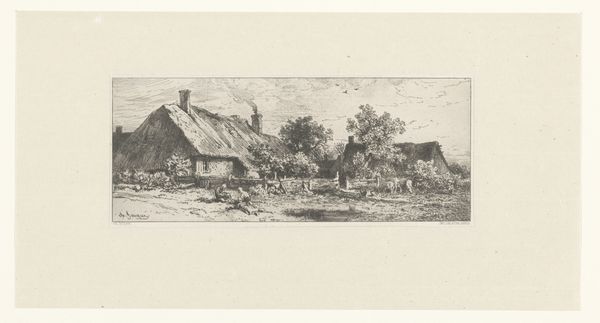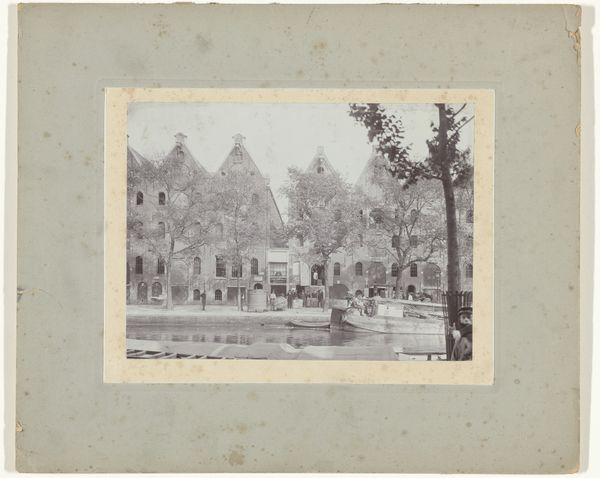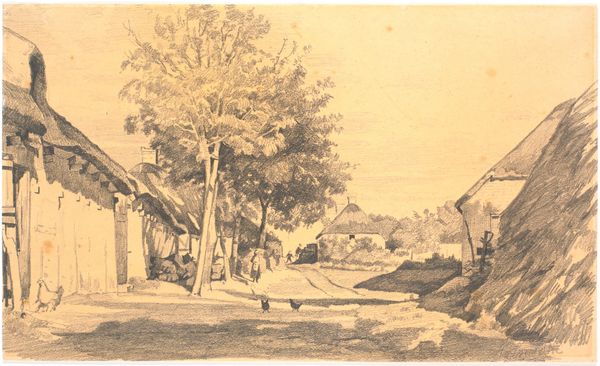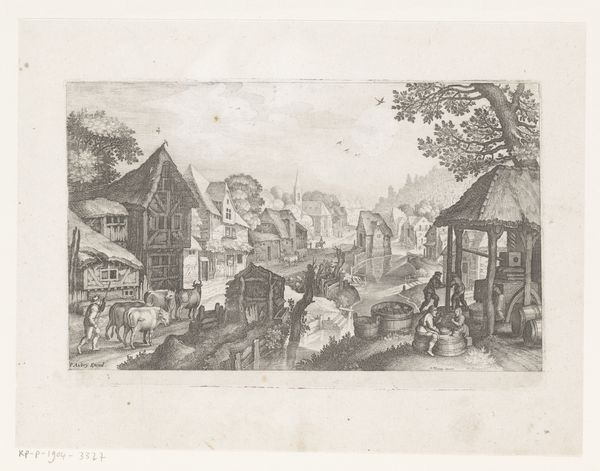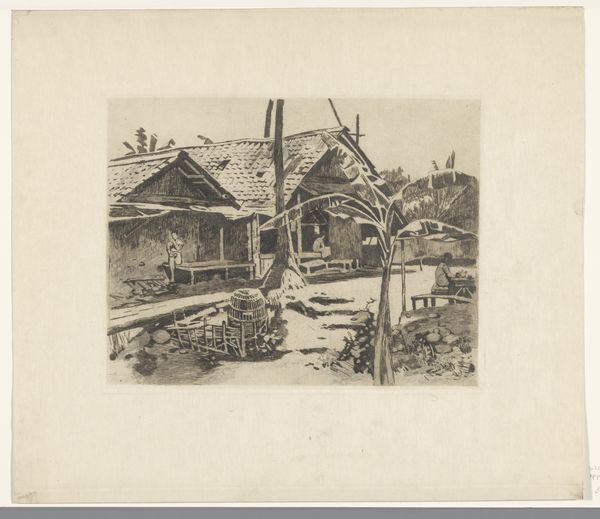
print, etching
#
dutch-golden-age
# print
#
etching
#
landscape
#
etching
#
cityscape
Dimensions: height 110 mm, width 167 mm
Copyright: Rijks Museum: Open Domain
Curator: Let's take a look at this artwork titled "Gezicht op Zaandam." It is an etching by Rens Lensselink and likely dates from between 1870 and 1936. Editor: It’s a delicately rendered scene. I'm immediately struck by the density of detail crammed into this modest composition. The effect is somewhat dreamlike, wouldn't you say? It has the soft feel of an image caught from memory. Curator: I see that too. Lenselink likely created this as part of a series intended for wider distribution, so a readily-recognizable picturesque scene in Zaandam makes perfect sense. Note how the windmill functions as a point of historical pride and industrious labor, playing into the cultural identity. Editor: Absolutely, and considering the etching process—it would have been quite a replicable piece. However, I find its seeming nonchalance deeply compelling; despite its historical importance in preserving place and labor, one wonders how social status factors into the choice of this landscape. What social stratification might exist between the working people and perhaps the bourgeois tourist who bought these etchings as mementos? Curator: Those dynamics certainly must have shaped the production and circulation of such images. It makes one consider who the intended audience truly was—did it cater to local pride or was it crafted for a more distant viewership with its own desires and expectations regarding the landscape? Editor: Perhaps it was a little of both? Perhaps for a distant, bourgeois, often male, viewership? Looking more closely, this scene is incredibly dense, crowded in on itself; what we're seeing here really gets at the history and context through those details: the modest homes, that lonely-seeming windmill, and the sense of tightly knit community it evokes. Curator: It presents an idealized image, but there’s always tension there between the visible subject and the complex circumstances of life within that depicted moment, and in this instance, what it was designed to represent at that point in time. Editor: An excellent point. I come away feeling more conscious of those unseen dimensions that linger just beyond the paper's edge. Thank you for opening my eyes to this work’s complexities.
Comments
No comments
Be the first to comment and join the conversation on the ultimate creative platform.
